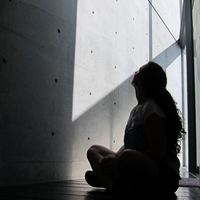Purpose The purpose of this paper is to discuss the role of contemporary architecture in heritage protection, reinterpretation and reuse, an issue that has become increasingly relevant due to the recognition of architectural heritage as a... more
Purpose The purpose of this paper is to discuss the role of contemporary architecture in heritage protection, reinterpretation and reuse, an issue that has become increasingly relevant due to the recognition of architectural heritage as a key factor for cultural and economic development. Design/methodology/approach In Portugal, as elsewhere in Europe, cultural heritage management has often been associated with the creation of new museum spaces, namely, within national monuments and archaeological sites. Drawing on restoration theories and international charters, this paper analyses and compares two parallel interventions recently built inside São Jorge Castle, in Lisbon: the Museum Centre (Victor Mestre and Sofia Aleixo, 2007-2008) and the Archaeological Site (João Luís Carrilho da Graça, 2008-2010). This approach offers insight on the complexity of addressing and reconfiguring the profusion of past transformations within a single monument. Findings These two complementary museum sp...
Research Interests:
The increasing recognition of the value of heritage and the parallel development of the museum sector, in number and programmatic diversity, has valued, especially since the mid-twentieth century, the reintegration of buildings, often... more
The increasing recognition of the value of heritage and the parallel development of the museum sector, in number and programmatic diversity, has valued, especially since the mid-twentieth century, the reintegration of buildings, often classified as monuments, for the allocation of museum programmes. This research work aims to study the relationship between monuments and museum practice, developing a thorough reflection based on the analysis of the two complementary museum spaces, recently inaugurated in São Jorge Castle, Lisbon. Although acting upon places of distinct features, the Museum Centre (project by Victor Mestre and Sofia Aleixo, 2007-08) and the Archaeological Site Centre (authored by João Luís Carrilho da Graça, 2008-10) evidence a continuity that ensures that heritage is presented as an integral part of its physical and cultural context. Both projects substantiate, in unique ways, the introduction of the museum programme in a space of historical character, by differentiating between new and preexisting architectures, by opting for the interventions' reversibility and by respecting the authenticity of the site. The architectural and archaeological heritage that composes the Castle, understood as a value in itself, is thus enriched by the museum programme, establishing a renewed dialogue between the past and the present.
Research Interests:
A crescente valorização do património e o desenvolvimento paralelo do setor museológico, em número e diversidade programática, têm valorizado, sobretudo desde meados do século XX, a reabilitação de edifícios, frequentemente classificados... more
A crescente valorização do património e o desenvolvimento paralelo do setor museológico, em número e diversidade programática, têm valorizado, sobretudo desde meados do século XX, a reabilitação de edifícios, frequentemente classificados como monumentos, para a atribuição de programas museológicos.
A presente dissertação pretende estudar a relação entre monumentos e museografia, desenvolvendo uma reflexão de âmbito geral a partir da análise dos dois espaços museológicos complementares, recentemente inaugurados no Castelo de São Jorge, em Lisboa. Embora atuem sobre lugares de características distintas, o Núcleo Museológico (projeto de Victor Mestre e Sofia Aleixo, 2007-08) e o Núcleo Arqueológico (da autoria de João Luís Carrilho da Graça, 2008-10) evidenciam uma continuidade que garante que o património se apresenta como parte integrante do seu contexto físico e cultural. Ambos os projetos resolvem, de forma singular, a introdução do programa museológico num espaço de natureza histórica, através da diferenciação entre obra nova e preexistente, da opção pela reversibilidade das intervenções e do respeito pela autenticidade do lugar. O património arquitetónico e arqueológico que constitui o Castelo, entendido como um valor em si mesmo, surge valorizado pelo programa museológico, apto para um diálogo renovado com a vontade do tempo.
A presente dissertação pretende estudar a relação entre monumentos e museografia, desenvolvendo uma reflexão de âmbito geral a partir da análise dos dois espaços museológicos complementares, recentemente inaugurados no Castelo de São Jorge, em Lisboa. Embora atuem sobre lugares de características distintas, o Núcleo Museológico (projeto de Victor Mestre e Sofia Aleixo, 2007-08) e o Núcleo Arqueológico (da autoria de João Luís Carrilho da Graça, 2008-10) evidenciam uma continuidade que garante que o património se apresenta como parte integrante do seu contexto físico e cultural. Ambos os projetos resolvem, de forma singular, a introdução do programa museológico num espaço de natureza histórica, através da diferenciação entre obra nova e preexistente, da opção pela reversibilidade das intervenções e do respeito pela autenticidade do lugar. O património arquitetónico e arqueológico que constitui o Castelo, entendido como um valor em si mesmo, surge valorizado pelo programa museológico, apto para um diálogo renovado com a vontade do tempo.
